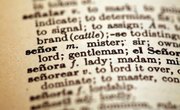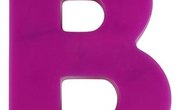The German alphabet is similar to the English one. The difference is four letters: German has 30 letters, while English has 26. Being able to recognize the four extra letters and to convert the other German letters into their English sound are essential to translating German.
Write down the 26 letters of the English alphabet and the 30 letters of the German alphabet, using the pencil and notebook. The German alphabet can be viewed and heard online at the Language Guide website.
Notice the four additional letters: "ä," "ö," "ü," and "ß." The dots above the "a," "o," and "u" are called umlauts and give the vowels different sounds. To spell out the sound, the umlauts are removed and the letter "e" is added. For example, "ä" becomes ae, "ö" becomes oe and "ü" becomes ue. The "ß" is called an Eszett in German and is the same as a double "s." Listen to these letters on the Language Guide website.
Practice "ä," "ö," "ü," and "ß" by writing a row on every other line in the notebook. Underneath the rows of "ä," "ö," "ü," and "ß," write rows of ae, oe, ue and ss.
Open the German language book and look for words containing "ä," "ö," "ü," or "ß." Choose a few and copy them onto a new notebook page.
Without looking at the first practice notebook page, translate the letters "ä," "ö," "ü," and "ß" from the words found in the German book into their sound spelling.
Related Articles
References










